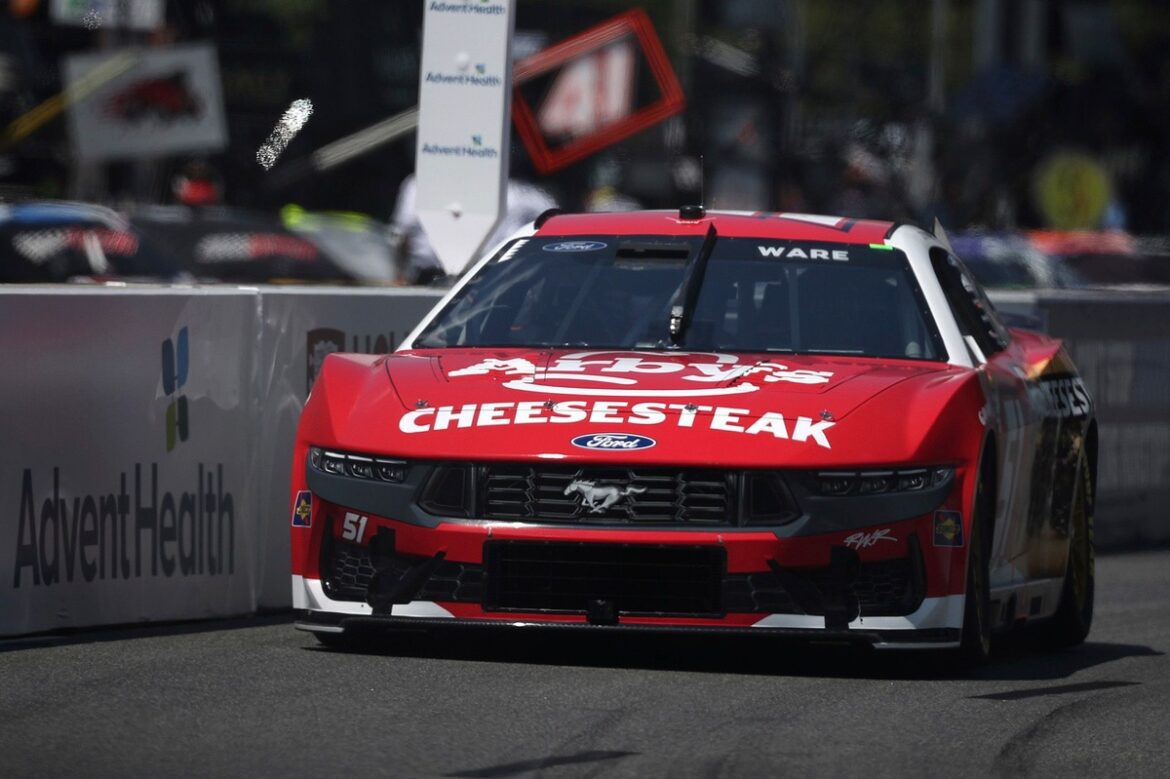NASCAR’s Response to Controversy Over Race Finish in Chicago
NASCAR recently faced scrutiny regarding its response to a significant incident during a race in Chicago. The controversy arose after the organization took considerable time to deploy a caution following a serious crash involving driver Cody Ware. As the race leader, Shane van Gisbergen, approached the final lap, Ware found himself in a precarious situation when a brake rotor failure forced his car into a high-speed collision with the tire barriers.
The Incident Unfolds
During the race, Cody Ware was positioned 18th when the situation escalated. The tension heightened as van Gisbergen neared the white flag, signaling the final lap. Unfortunately, as Ware navigated one of the fastest sections of the track, he experienced a catastrophic brake issue. The brake rotor exploded, causing Ware’s No. 51 Ford to careen into the tire barriers at Turn 6, hitting the wall at an estimated speed of 90 mph.
Despite the dramatic nature of the crash, NASCAR officials delayed in throwing the caution flag. By the time they decided to act, van Gisbergen had already crossed the white flag, concluding the race before any action could be taken to potentially restart it under caution. Fortunately, Ware emerged from the wreck without any injuries, but the incident raised significant concerns about NASCAR’s decision-making in these critical moments.
Questions about Safety Protocols
The delay in response prompted questions regarding NASCAR’s safety protocols and officiating. Fans and analysts alike expressed frustration, not merely for the missed opportunity for an overtime restart, but primarily due to safety concerns. Timeliness in responding to accidents is paramount in ensuring the well-being of drivers.
Brad Moran, the Managing Director of the NASCAR Cup Series, addressed these concerns in a recent interview. He explained that NASCAR’s delayed reaction stemmed from a lack of visibility regarding the initial crash. This issue has surfaced in the past, particularly at road and street courses where race control may miss certain incidents or misunderstand their severity.
Insights from NASCAR Officials
In his discussion with SiriusXM NASCAR Radio, Moran elaborated on the events from the perspective of NASCAR officials. "We didn’t have the actual footage of the impact of the car getting into the tire barrier," he stated. This lack of immediate visual confirmation hindered their ability to act swiftly. The organization recognized that such incidents require a reevaluation of their monitoring capabilities.
Moran also emphasized that NASCAR adhered to its standard operating procedures, which include waving a local blue flag to provide drivers the opportunity to maneuver away from the scene of an accident. However, if officials had been aware of the severity of the crash, the response would have been different. "If they’re in the racing line, it changes the thought process," he noted. In situations where cars are out of the racing line, NASCAR typically allows more time for the driver to vacate the area, which was the case with Ware’s accident.
While the officials aimed to provide an uninterrupted racing experience, the ability to view and assess the impact in real-time would have prompted immediate caution. "If we would have had the shot of Cody’s impact there, the caution would have come out immediately," Moran acknowledged. The decision to deploy a caution flag only came once Ware had lowered his window net, signaling he was safe to exit the vehicle. This delay raised critical questions about the efficiency and effectiveness of NASCAR’s incident management protocols.
Future Improvements
In light of the incident, NASCAR is committed to reviewing their procedures and making necessary improvements. Moran indicated that the organization plans to analyze various aspects of the Chicago race track to enhance their response protocols for future events. "That’s on us, we’re gonna go back, we’re gonna review it, and if we go back to Chicago, we’ll definitely have a different plan," he stated.
The aim is not only to improve race control reaction times but also to ensure that such incidents are managed in a manner that prioritizes driver safety. NASCAR recognizes the importance of learning from these experiences to prevent similar situations in the future.
The Importance of Safety in NASCAR
The safety of drivers is a top priority for NASCAR, and incidents like the one involving Cody Ware underscore the necessity for constant vigilance and improvement. While the organization strives to deliver an exhilarating racing experience for fans, it must also remain dedicated to the well-being of its competitors.
As the sport continues to evolve, NASCAR’s officials are aware that advancements in technology and communication can significantly enhance their operational capabilities. By investing in better monitoring systems and improving their response strategies, they can ensure a safer environment for drivers while maintaining the excitement that fans expect from NASCAR events.
Conclusion
The incident during the Chicago race serves as a critical reminder of the challenges faced by NASCAR officials in managing race conditions and ensuring driver safety. The feedback and scrutiny following such events contribute to the ongoing evolution of the sport. As NASCAR looks to the future, the lessons learned from this incident will play a vital role in shaping their policies and procedures, ultimately leading to a safer racing environment for all participants.
